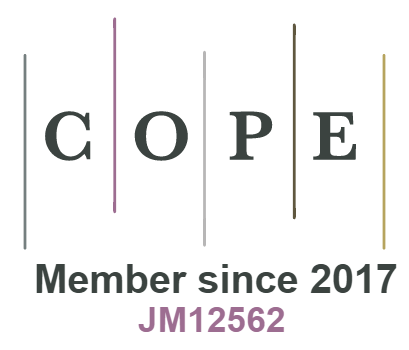Unlocking the Power of Agile Methodology: A Journey to Developing Software and Web Applications
DOI:
https://doi.org/10.18034/ei.v10i2.677Keywords:
Agile Methodologies, Traditional Methodologies, Web Engineering, Software Engineering, XP, Scrum, ICONIX, CrystalAbstract
Agile development approaches are becoming increasingly significant in the current circumstances. Throughout the past few years, there has been a rise in the number of software application development projects that use agile approaches. It is a new paradigm of research that crosses disciplinary boundaries. This article delves into the iterative and collaborative approach of Agile, highlighting its ability to enhance project flexibility, customer satisfaction, and product quality. It showcases real-world examples of Agile implementation and shares best practices for successful adoption. The study covers Agile's introduction, adoption, usage, and analysis in both engineering streams. The remaining portion of the article provides an overview of the critical distinctions between applying agile methodologies to software engineering and web engineering. It explains the constraints inherent in using agile software and web engineering methodologies. Readers will gain insights into harnessing the agility of this methodology to adapt to changing requirements, reduce development risks, and deliver cutting-edge software solutions efficiently. Embrace Agile and embark on a journey toward software development excellence.
Downloads
References
Chatzigeorgiou, A., Theodorou, T. L., Violettas, G. E., Xinogalos, S. (2016). Blending an Android Development Course with Software Engineering Concepts. Education and Information Technologies, 21(6), 1847-1875. https://doi.org/10.1007/s10639-015-9423-3 DOI: https://doi.org/10.1007/s10639-015-9423-3
Del, Á. I. M., Palma, J., Túnez, S. (2014). Milestones in Software Engineering and Knowledge Engineering History: A Comparative Review. The Scientific World Journal, 2014, https://doi.org/10.1155/2014/692510 DOI: https://doi.org/10.1155/2014/692510
Farid, A. B. (2015). Proactive Software Engineering Approach to Ensure Rapid Software Development and Scalable Production with Limited Resources. International Journal of Advanced Computer Science and Applications, 6(11). https://doi.org/10.14569/IJACSA.2015.061120 DOI: https://doi.org/10.14569/IJACSA.2015.061120
Ghazi, P., Glinz, M. (2017). Challenges of Working With Artifacts in Requirements Engineering and Software Engineering. Requirements Engineering, 22(3), 359-385. https://doi.org/10.1007/s00766-017-0272-z DOI: https://doi.org/10.1007/s00766-017-0272-z
Graciamary, A. C., Chidambaram. (2016). Enhanced Re-Engineering Mechanism to Improve the Efficiency of Software Re-Engineering. International Journal of Advanced Computer Science and Applications, 7(11). https://doi.org/10.14569/IJACSA.2016.071136 DOI: https://doi.org/10.14569/IJACSA.2016.071136
Insfran, E., Chastek, G., Donohoe, P., Leite, D. P. J. C. S. (2014). Requirements Engineering in Software Product Line Engineering. Requirements Engineering, 19(4), 331-332. https://doi.org/10.1007/s00766-013-0189-0 DOI: https://doi.org/10.1007/s00766-013-0189-0
Kaluvakuri, S. (2022). Revolutionizing Healthcare: The Impact of Robotics on Health Services. Malaysian Journal of Medical and Biological Research, 9(2), 41-50. https://mjmbr.my/index.php/mjmbr/article/view/680
Kaluvakuri, S., & Amin, R. (2018). From Paper Trails to Digital Success: The Evolution of E-Accounting. Asian Accounting and Auditing Advancement, 9(1), 73–88. https://4ajournal.com/article/view/82
Kaluvakuri, S., & Lal, K. (2017). Networking Alchemy: Demystifying the Magic behind Seamless Digital Connectivity. International Journal of Reciprocal Symmetry and Theoretical Physics, 4, 20-28. https://upright.pub/index.php/ijrstp/article/view/105
Kaluvakuri, S., Maddali, K., Rahimi, N., Gupta, B., Debnath, N. (2020). Generalization of rc-based low diameter hierarchical structured p2p network architecture. International Journal of Computers and Their Applications, 27(2), 74-83. https://isca-hq.org/Documents/Journal/Archive/2020volume27-2.pdf
Kamepally, A. K., Nalamothu, T. (2016). Agile Methodologies in Software Engineering and Web Engineering. International Journal of Education and Management Engineering, 6(5), 1. https://doi.org/10.5815/ijeme.2016.05.01 DOI: https://doi.org/10.5815/ijeme.2016.05.01
Maddali, K., Kaluvakuri, S., Roy, I., Liu, Z., Gupta, B., Debnath, N. (2020). Generalizing Chinese Remainder Theorem Based Fault Tolerant Non-DHT Hierarchical Structured Peer-to-Peer Network. International Journal of Computers and their Applications, 27(4), 150-157. https://isca-hq.org/Documents/Journal/Archive/2020volume27-4.pdf
Maddali, K., Kaluvakuri, S., Roy, I., Rahimi, N., Gupta, B., Debnath, N. (2021). A Comprehensive Study of Some Recent Proximity Awareness Models and Common-Interest Architectural Formulations among P2P Systems. International Journal of Computers and their Applications, 28(4), 179-192.
Maddali, K., Rekabdar, B., Kaluvakuri, S., Gupta, B. (2019). Efficient Capacity-Constrained Multicast in RC-Based P2P Networks. In Proceedings of 32nd International Conference on Computer Applications in Industry and Engineering. EPiC Series in Computing, 63, 121–129. https://doi.org/10.29007/dhwl DOI: https://doi.org/10.29007/dhwl
Perera, I. (2011). Impact of Poor Requirement Engineering in Software Outsourcing: A Study on Software Developers’ Experience. International Journal of Computers, Communications and Control, 6(2), 337-348. https://doi.org/10.15837/ijccc.2011.2.2182 DOI: https://doi.org/10.15837/ijccc.2011.2.2182
Roy, I., Kaluvakuri, S., Maddali, K., Aydeger, A., Gupta, B., Debnath, N. (2021a). Capacity Constrained Broadcast and Multicast Protocols for Clusters in a Pyramid Tree-based Structured P2P Network. International Journal for Computers & Their Applications, 28(3), 122-131. https://isca-hq.org/isca.php?p=2021volume2803
Roy, I., Kaluvakuri, S., Maddali, K., Liu, Z., Gupta, B. (2021b). Efficient Communication Protocols for Non DHT-based Pyramid Tree P2P Architecture. WSEAS Transactions on Computers, 20, 108-125. https://doi.org/10.37394/23205.2021.20.13 DOI: https://doi.org/10.37394/23205.2021.20.13
Roy, I., Kaluvakuri, S., Maddali, K., Liu, Z., Gupta, B., Debnath, N. (2020). Novel Design of Load-Balanced and Fault-Tolerant Multicasting Protocols for PIM-SM. International Journal of Computers and their Applications, 27(4), 158-167. https://isca-hq.org/Documents/Journal/Archive/2020volume27-4.pdf
Roy, I., Rahimi, N., Kaluvakuri, S., Maddali, K., Gupta, B., Debnath, N. (2021c). Design of Efficient Broadcast Protocol for Pyramid Tree-based P2P Network Architecture. EPiC Series in Computing, 75, 80-89. https://doi.org/10.29007/8ws1 DOI: https://doi.org/10.29007/8ws1
Samadhiya, D., Chang, W. C. (2015). Toward Meta-Software Engineering Multistage Process. Applied Mechanics and Materials, 764-765, 983-987. https://doi.org/10.4028/www.scientific.net/AMM.764-765.983 DOI: https://doi.org/10.4028/www.scientific.net/AMM.764-765.983
Song, X. J., Zeng, Z. L. (2014). Research on Application of Software Engineering Theory in Software Development. Applied Mechanics and Materials, 687-691, 1921-1924. https://doi.org/10.4028/www.scientific.net/AMM.687-691.1921 DOI: https://doi.org/10.4028/www.scientific.net/AMM.687-691.1921
Downloads
Published
Issue
Section
License
Copyright (c) 2022 Venkata Koteswara Rao Ballamudi

This work is licensed under a Creative Commons Attribution-NonCommercial 4.0 International License.
Engineering International is an Open Access journal. Authors who publish with this journal agree to the following terms:
- Authors retain copyright and grant the journal the right of first publication with the work simultaneously licensed under a CC BY-NC 4.0 International License that allows others to share the work with an acknowledgment of the work's authorship and initial publication in this journal.
- Authors are able to enter into separate, additional contractual arrangements for the non-exclusive distribution of the journal's published version of their work (e.g., post it to an institutional repository or publish it in a book), with an acknowledgment of its initial publication in this journal. We require authors to inform us of any instances of re-publication.









